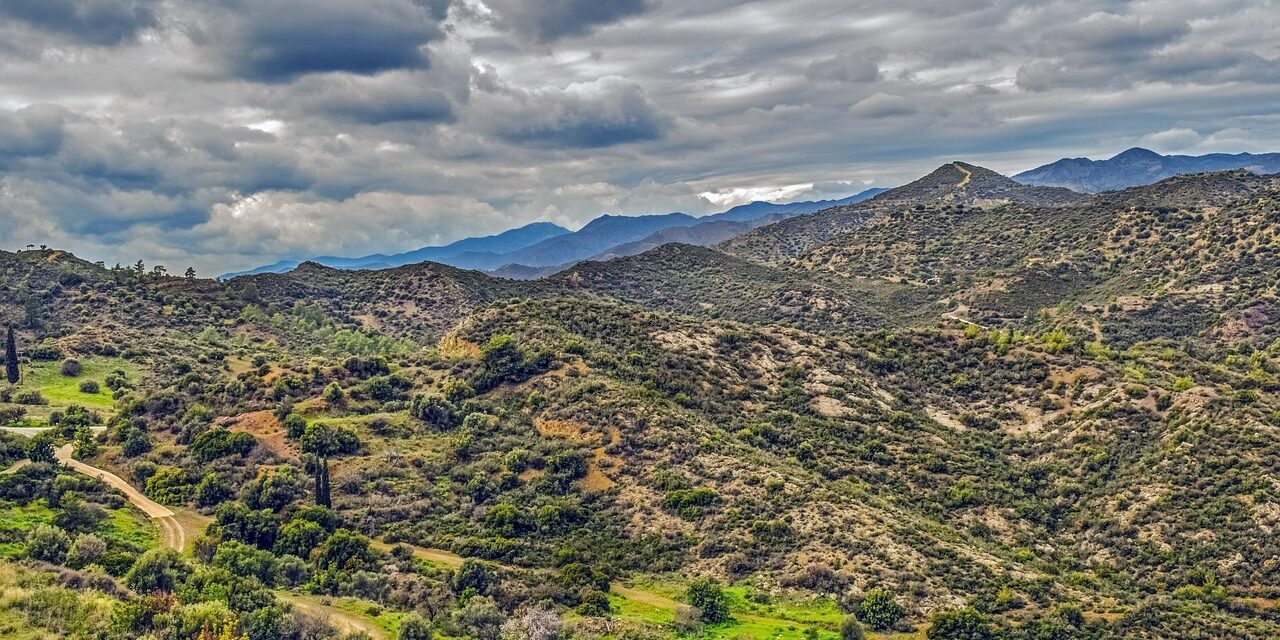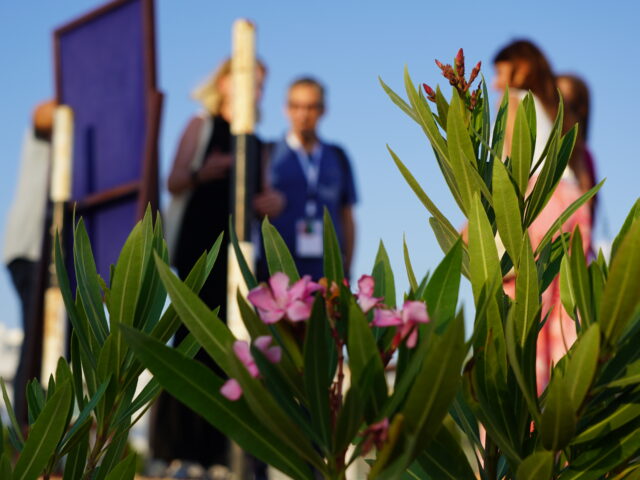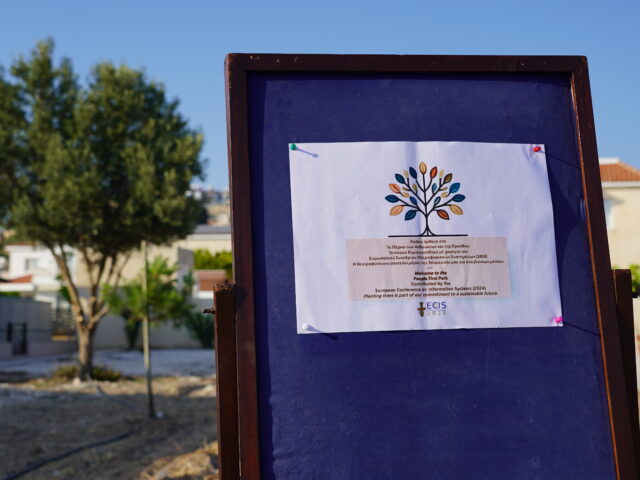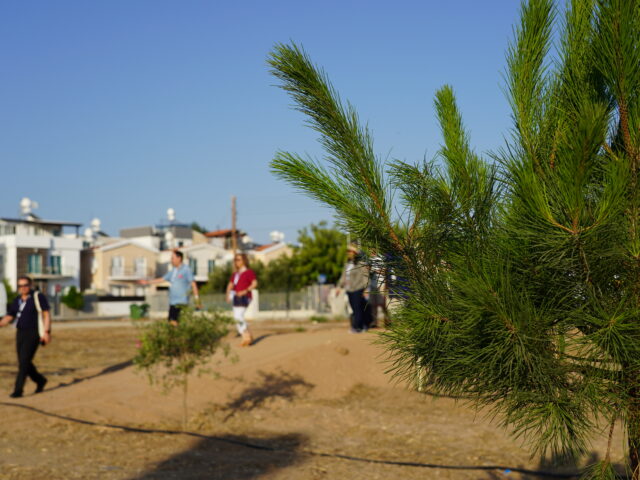GeomorphyCyprus
With an area of 9,251 km2, Cyprus is the third-largest Mediterranean island. It is situated at the easternmost end of the Mediterranean basin, neighboring Africa, Asia, and Europe, 64 km south of Turkey and 105 km west of Syria.
The geomorphology of Cyprus is distinguished by two main mountain ranges, Troodos (1952 m), which consists of basic and ultrabasic plutonic rocks, and Pentadaktylos (1024 m), made up of a succession of mostly allochthonous sedimentary formations. Between the ranges lies the central plain of Mesaoria, comprised of both alluvial-colluvial soils and fanglomerates, biocalcarenites, sandstones, and sandy marls with gypsum outposts. The coastline ranges from steep cliffs and rocky shorelines with sea caves to gentle slopes and sandy beaches. Most rivers originate from the Troodos range and are intermittent, with few perennial flow parts.
GreenaryCyprus
- Vegetation and Habitats
- Flora
Cyprus is an island with diverse landscapes, due to both its varied climate and geology and the presence of man since 8200 AD. High forests cover about 17% of the island, extending mainly on the Troodos and Pentadaktylos ranges. The hills are covered by shrubs alternating with built-up areas and cultivations. The plains of the lowlands are covered by cultivations (about 45% of the island) and habitations, but there are also small areas of natural habitats locally. The natural and semi-natural vegetation types as well as the cultivations, especially traditional ones such as tree orchards, constitute important habitats for rare plants.
The thermophilous Calabrian pine (Pinus brutia) forms the most extended forests, from sea level to about 1400 m, and covers the Troodos and Pentadaktylos mountain ranges and part of the Akamas Peninsula. Cypress (Cupressus sempervirens) forests occur mainly on Pentadaktylos. The semi-deciduous Quercus infectoria subsp. Veneris forms the only remnant stands at the western part of the island. The Pinus nigra subsp. pallasianaforest, the endemic Cedrus brevifoliaforest, and the stands of mountain junipers are restricted to the higher altitudes of Troodos. The golden oak (Quercus alnifolia) occurs under the conifers or in pure stands, at altitudes of 700 m and above all across the Troodos range.
Various types of shrubs are dominant in the thermo-Mediterranean and semi-arid zones. Olea europaea and Ceratonia siliquamaquis as well as Quercus cocciferasubsp. calliprinos tall shrubs are rather rare, while the low and spiny phrygana are the most common vegetation type. Juniperus phoenicea matorral is typical of the coastal zone. Dry grasslands develop in pastures and shrub and forest openings. A unique peat grassland (a fen) occurs at only two locations on Troodos.
The sandy coastal zone is generally narrow, with ammophilous communities on low embryonic and shifting dunes. Extended dune systems, including stabilized dunes with shrubs and dune slacks, develop at few places (Apostolos Andreas at Karpasia, Akamas), notably in connection with halophytic wetlands, i.e., Ammohostos, Agia Eirini and the salt lakes of Akrotiri and Larnaca.
A discontinuous and mostly narrow line of riparian shrub and forest develops along the numerous streams that dissect the island, often in the midst of cultivated land. Standing fresh water bodies are only artificial storage basins and dams, yet hydrophilous vegetation has been established at most of them.
The rocky habitats include chasmophytic communities developing on limestone (Akamas, Pentadaktylos), ultramafic rock (Troodos) and wet rocks, and also endemic serpentinophilous chamaephytic communities (Troodos, Akamas, and Lemesos Forest).
A total of 42 Annex I habitat types (Habitats Directive) have been confirmed in Cyprus, of which five are endemic habitat types, i.e.:
– 9390* Scrub and low forest vegetation with Quercus alnifolia
– 93A0 Woodlands with Quercus infectoria
– 9590* Cedrus brevifoliaforests
– 6460 Peat grasslands of Troodos
– 62B0* Serpentinophilous grassland of Cyprus






The publication of the Flora of Cyprus by Meikle in 1977 and 1985 was a milestone in the study of the flora of Cyprus, which began in 1787 and has been continuous up to now with the discovery of new indigenous and alien taxa and new endemic taxa. Several scientific publications that followed contributed to an even more complete knowledge of the flora of Cyprus.
In total the indigenous flora (Pteridophytes and Spermatophytes) of Cyprus includes 1,946 species or subspecies, including 297 alien and hybrid taxa. The endemic flora includes 110 species or 141 taxaat subspecies levels (7.15% and 8.55% of the indigenous flora, respectively). The National Forest Park of Troodos is a center for endemics, hosting 10 local endemics and 70 cyprian endemics (50% of the total endemics), while the whole Troodos range hosts 102 endemic taxa. Other important areas for endemics are the Pentadaktylos range and the Akamas Peninsula with 61 and 43 cyprian endemic taxa, respectively. Some notable flora elements are the endemic trees Cedrus brevifolia and Quercus alnifolia, and also the endemic shrub Bosea cypria, a relic element of Tethys.











EasyTrees Program
This program not only allows conference attendees to contribute to the beautiful landscape of Cyprus but also plays a crucial role in combating climate change and supporting local wildlife. Here’s why you should take part:
✔ Communication with the Authorities
✔ Identify Suitable Locations
✔ Select Appropriate Tree Species
✔ Inform the attendees through the online registration system, website and social media.
✔ Transportation Arrangements




The Natura 2000 network in Cyprus
The Natura 2000 European Ecological Network is a wide European network of protected natural areas for species of flora, fauna, birds and habitats. It is the cornerstone of EU policy for the protection of the environment and biodiversity and aims to protect and manage vulnerable species and habitats in all their natural area stretching across Europe, regardless of the national or political boundaries. It is based on the full and effective implementation and enforcement of Directive 1992/43/EC on the Conservation of Natural Habitats and Directive 2009/147/EC on the Protection of Wild Birds.
Here are some interesting facts about the Natura 2000 network in Cyprus:
- It has 39 Special Areas of Conservation (SAC), 4 Sites of Community Importance (SCI) and 33 Special Protection Areas, covering 10,145 km2, including marine and terrestrial areas.
- Cyprus ranks among the top EU countries in terms of percentage of land area covered by the Natura 2000 network!
- 75% of State Forest Land is included in the network. That includes a total of 26 sites hosting significant forest areas.
- It is home to 21 mammals, 13 reptiles, 3 amphibians, 2 arthropods, 1 fish and 18 endemic plants (i.e. that are only found in Cyprus) – among others.




ClimateCyprus
The climate is typically Mediterranean with long, hot, dry summers and rainy winters separated by short autumn and spring seasons subject to unstable weather systems. Local meteorological phenomena are influenced by the Troodos and Pentadaktylos ranges, and also by the proximity to the sea. The annual average precipitation is 480 mm, and ranges from 300 mm on the central plain to 1100 mm on the peak of Troodos. According to the Rivas-Martínez classification, the bioclimate is Mediterranean Mesophytic to Xerophytic-Oceanean with zones ranging from Thermo-Mediterranean–semi-arid to Supra-Mediterranean-humid.




Subscribe Now!














